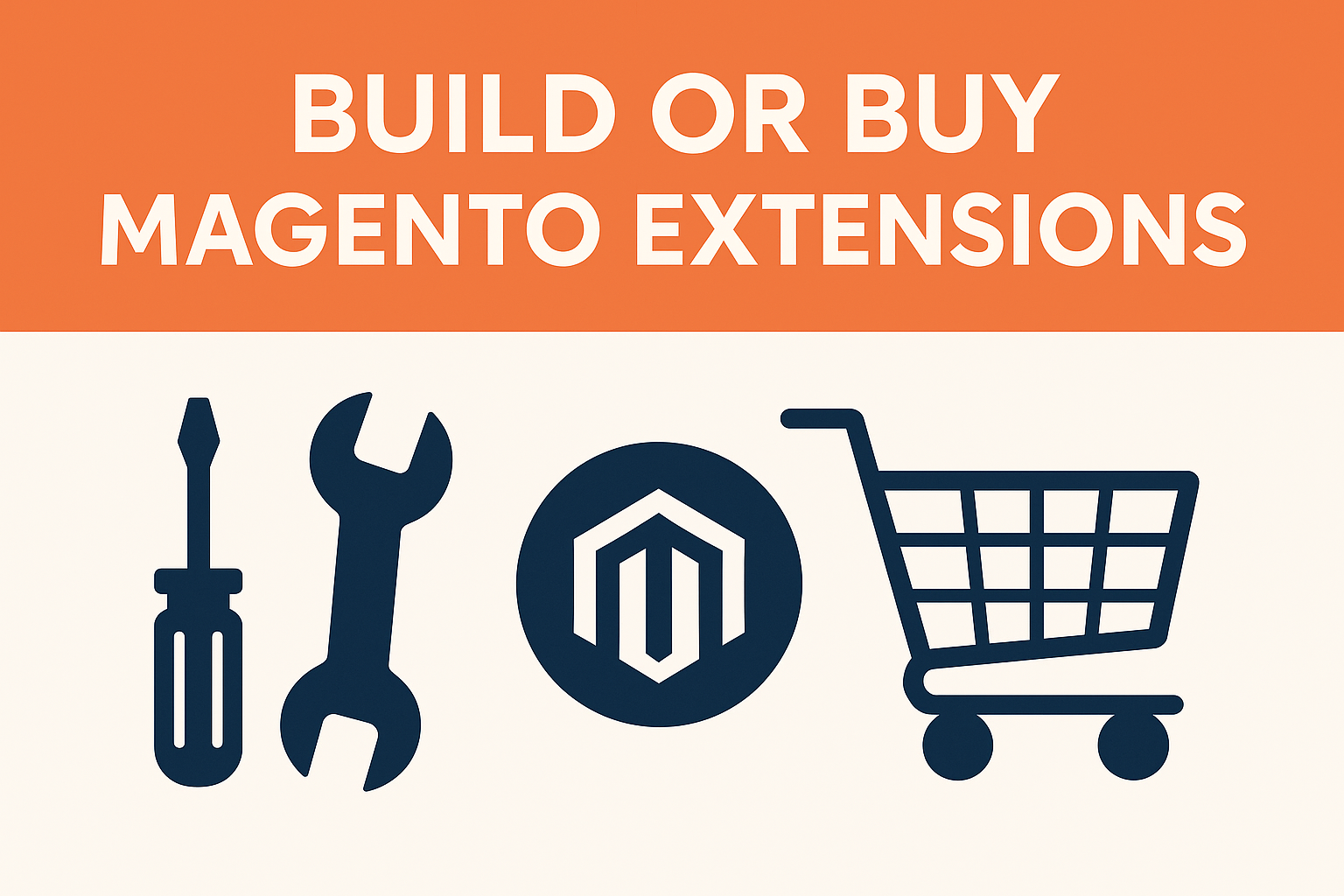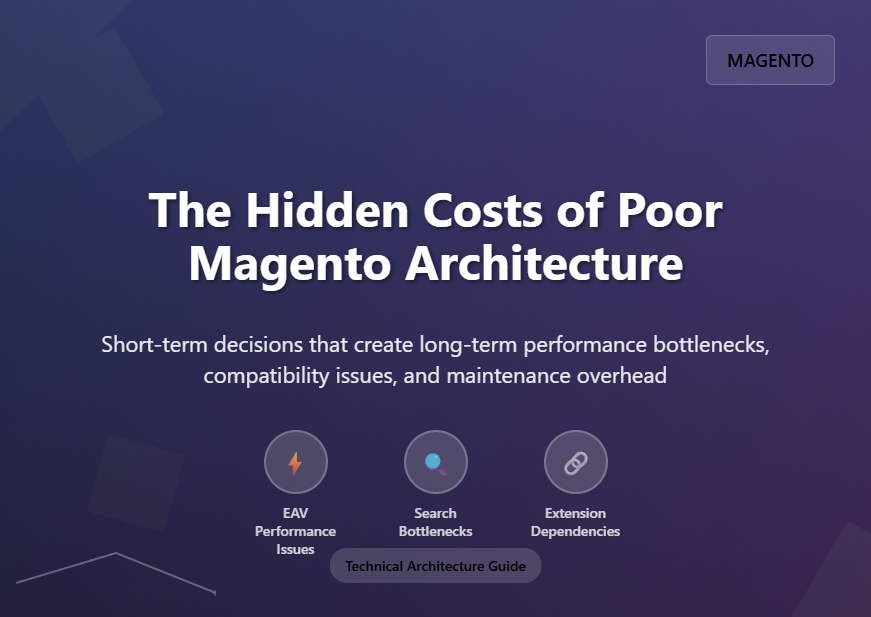5 Popular Magento Inventory Management Extensions in 2024
Use these magento inventory management extensions to increase efficiency and fuel a more seamless customer experience.
3 min read
 Tim Bucciarelli
:
July 8, 2025
Tim Bucciarelli
:
July 8, 2025

Table of Contents
Magento’s framework layer provides several extension points that dictate how custom functionality integrates with core services. Custom modules built against the framework must align with:
frontend, adminhtml, webapi_rest, and graphql.Well-architected custom modules use service contracts (Api/) and avoid calling core models or helpers directly. Instead, they interact with public interfaces and repositories.
Key indicators of a well-designed custom module:
module.xml, di.xml, webapi.xml) is declarative and minimal.Common issues in custom modules:
\Magento\Catalog\Model\Product).Technical Manager Tip: Ask for a walkthrough of how your team’s most recent custom module is integrated. Is it testable in isolation? Are its services reusable by other modules? These are signs that it aligns with Magento's architectural intent.
Third-party extensions often come with internal dependencies, assumptions about the environment, and unscoped behavior. Some common patterns that increase risk:
sales_order_save_after) without filters.Over time, a growing ecosystem of such extensions can create a fragile environment. Conflicts arise during upgrades or when two modules attempt to override the same class or intercept the same method with incompatible logic.
Mitigation strategies:
require, conflict, provide).For custom code, modularity is a risk reducer. For third-party code, transparency and control over dependencies are more important than feature count.
Technical Manager Tip: Request a plugin and preference audit from your development team. Any third-party module that installs class-level preferences should be flagged and reviewed.
Third-party extensions are appealing when budget or time is limited—but their lifecycle cost can exceed custom development if:
Conversely, custom modules require a higher upfront investment but offer:
Build vs. Buy Decision Framework:
| Consideration | Favor Buying | Favor Building |
|---|---|---|
| Feature is commoditized (e.g., basic blog, social login) | ✅ | ❌ |
| Feature must tightly integrate with custom workflows | ❌ | ✅ |
| Vendor provides roadmap, support, and test coverage | ✅ | ❌ |
| You need to modify the logic or data flow regularly | ❌ | ✅ |
| High frequency of upstream Magento upgrades | ❌ (unless vendor keeps pace) | ✅ (with internal ownership) |
Technical Manager Tip: Don't treat "buying" as a passive decision. Any third-party extension you adopt becomes part of your architecture—and inherits all the responsibilities that come with it.
If you choose to build, build with reuse in mind. Internal modules often start as single-purpose solutions but become harder to extend if designed too narrowly.
Guidelines for long-term maintainable custom code:
Api and Api/Data directories to define clear service contracts and DTOs.etc/extension_attributes.xml and data interfaces for cross-module communication.Also consider formalizing an internal module review process—ensuring every custom component meets a minimum bar of clarity, documentation, and testability before it enters your production stack.
The decision to build or buy Magento functionality is not just a resource call—it’s an architectural one. Third-party modules can accelerate delivery, but only if they respect the boundaries of your system. Custom development offers alignment and control, but only if it’s executed with Magento’s architectural expectations in mind.
As a technical manager, your job isn’t to pick one path every time—it’s to define the decision-making criteria that balances delivery speed with long-term system health.

Use these magento inventory management extensions to increase efficiency and fuel a more seamless customer experience.

Poor Magento architecture choices can lead to performance, stability, and maintenance issues. Smart architecture, careful optimizations, and technical debt management can help.

Discover top Magento Enterprise developers & alternatives. Find experts who enhance site speed, manage updates, create unique pages, improve UX, and more.